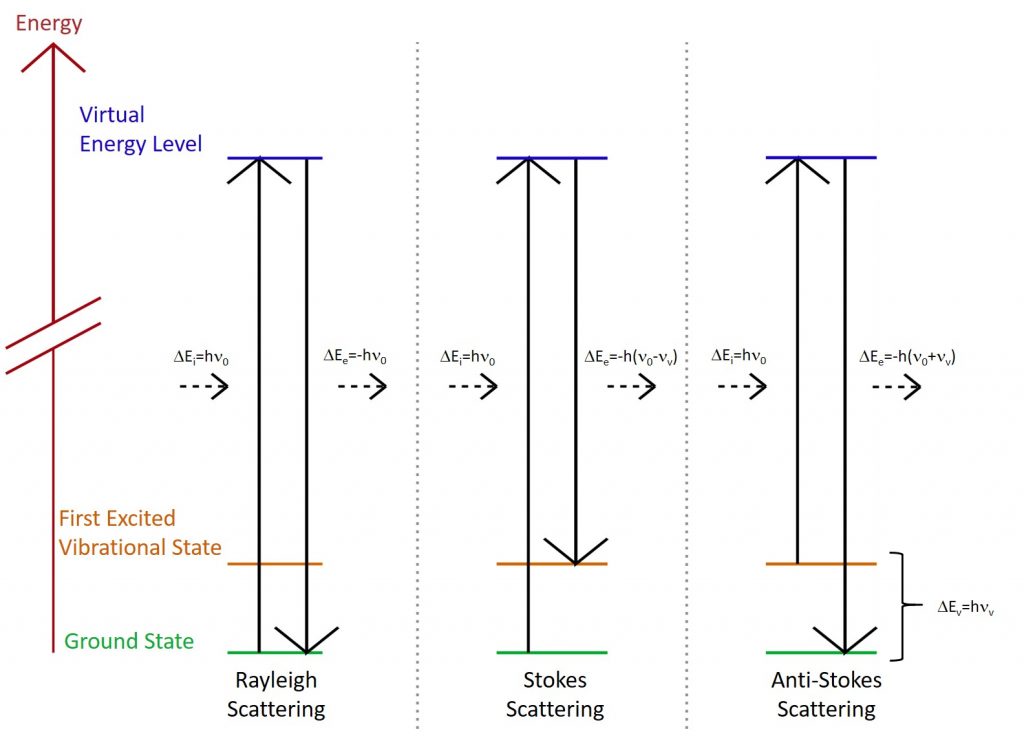The Raman Effect
The Raman effect is a light scattering phenomenon. When a monochromatic incident light is scattered on a molecule or crystalline solid two types of scattering occur. The first is elastic scattering, termed as Rayleigh scattering, where there is no energy loss within the system. The second is inelastic scattering, termed Raman scattering, which involves the exchange of energy between vibrational states. As energy is always conserved, the difference in energy between the incident and scattered photons causes changes in the energy of the molecule. Energy levels are quantized, so Raman scattering only occurs at discrete wavelengths corresponding to transitions between vibrational energy levels – allowing for a fingerprint of the sample to be obtained. The set of wavelengths measured from Raman scattering is the Raman spectrum, with analysis of these wavelengths called Raman spectroscopy.

Raman spectroscopy can be implemented in various ways dependent on the sample being studied. Specific application information on the more common techniques can be found in the links below.
